The Soldier's Details

- Surname:
- Docking
- First Name:
- Melville Roy
- Nick Name:
- Mel
- Rank:
- Private
- Regimental #:
- WX14856
- Company:
- ‘A’ Company, 4 Platoon
- Enlisted:
- 7.07.1941
- Discharged:
- 11.02.1946
- DOB:
- 16.09.1921
- Place of Birth:
- Subiaco, Western Australia
- Father's Name:
- Victor Roy Docking
- Mothers's Name:
- Mary Elizabeth 'Minnie' Docking (nee Schumann)
- Religion:
- Methodist
- Pre-war Occupation:
- Bread Carter
- Singapore:
- A. G. H. Roberts Barracks Changi, Selarang Barracks Changi. Following return from Thailand - Selarang Barracks Changi, X3 Party, Changi Gaol Camp.
- Force:
- ‘F’ Force Thailand
- Camps Thailand:
- Shimo Sonkurai, Tanbaya (Burma), Kanchanaburi
- POW#:
- 13927, 1/7519
- Return Details 1945:
- Singapore-Darwin-Sydney, HMT Arawa, Sydney-Melbourne by troop ship, Melbourne-Fremantle, HMT Strathmore
General Description
Docking enlisted 7 July 1941 aged 19 years into AIF from Albany where his family resided. He soon after joined 2/4th’s ‘A’ Company No. 4 Platoon under CO Lt McCaffrey.
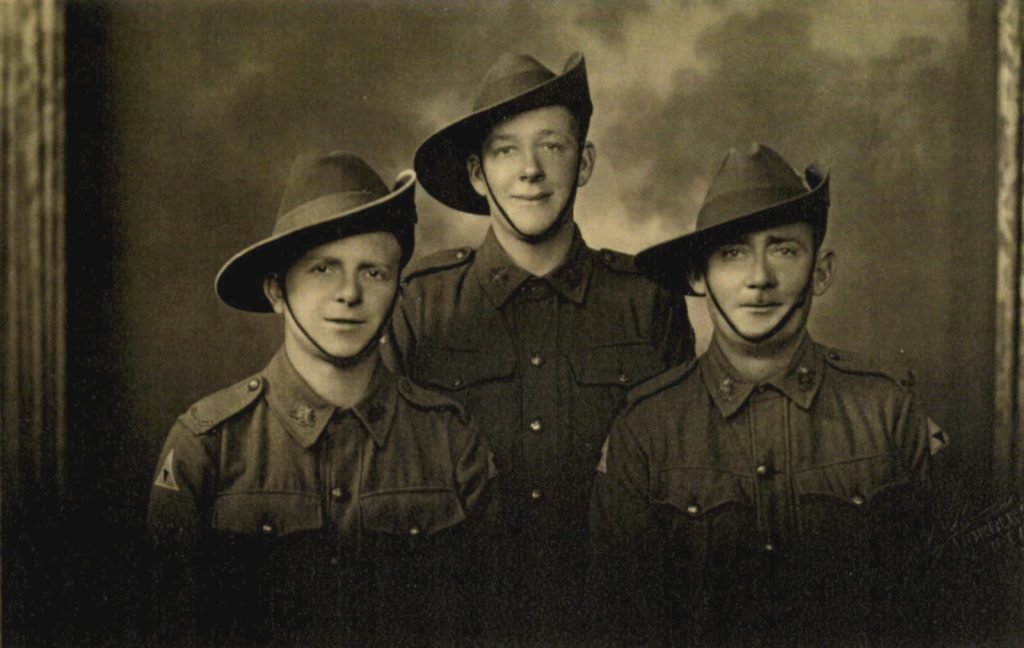
Mel Docking was a trumpet player. There arose a situation whereby his trumpet went missing (details are not known to us) and with Tom Bunning and Jamieson attended a tribunal to decide who it belonged to.
Docking was part of A Coy No. 4 Platoon
Soldier wounded in action at Buona Vista on 15/2/1942. Admitted to 2/19th Field Ambulance with a shrapnel wound to right buttock. Transferred to 2/13th Australian General Hospital. Soldier was a patient at Australian General Hospital Roberts Barracks until July 1942. Due to partial paralysis caused by damage to the sciatic nerve and loss of use of his right foot, this soldier was given an ‘E’ Medical Classification. He worked in the cook house for a time on light duties to promote his recovery.
Below: 48 men of 2/4th in ‘F’ Force. List compiled by Harold Cowie.
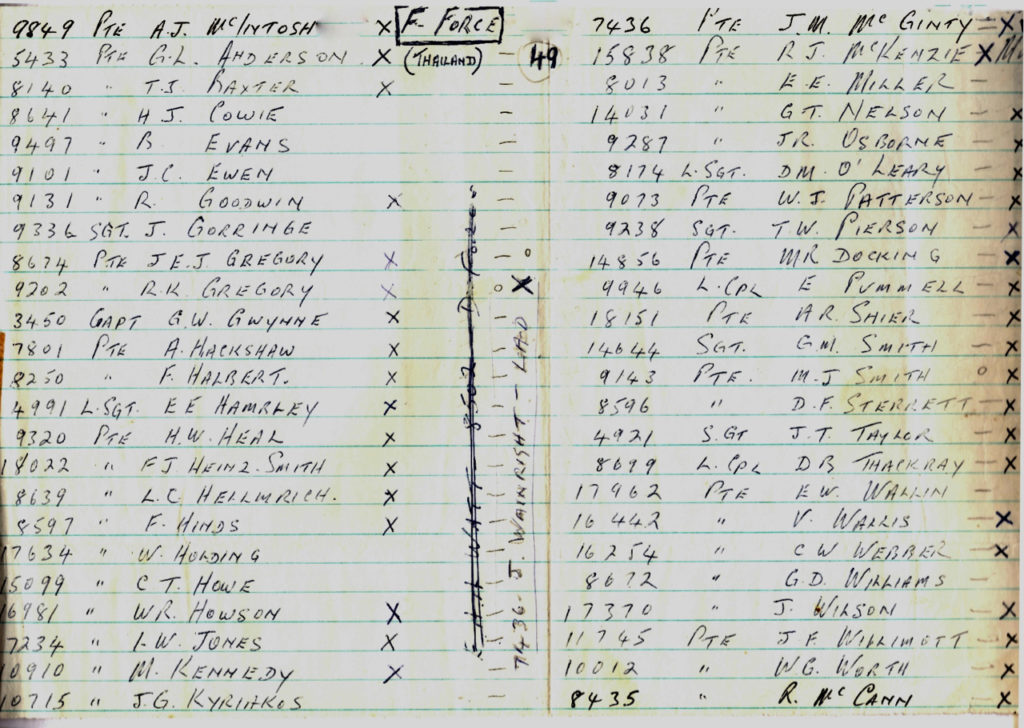
On 20 April 1943 he as selected and left with ‘F’ ForceThailand to work on the Burma-Thai Railway. He reported he was at Shimo Sonkurai, Tanbaya (Hospital Camp) and Kanchanaburi.
Docking provided a description of several camps.
Docking was sent with X3 Party at Singapore
Mel Docking ‘s parents Victor Roy Docking born in Prahan, Victoria and Mary Elizabeth Schumann known as Minnie born Albany were married 1921 in Perth. Mel was an only child.
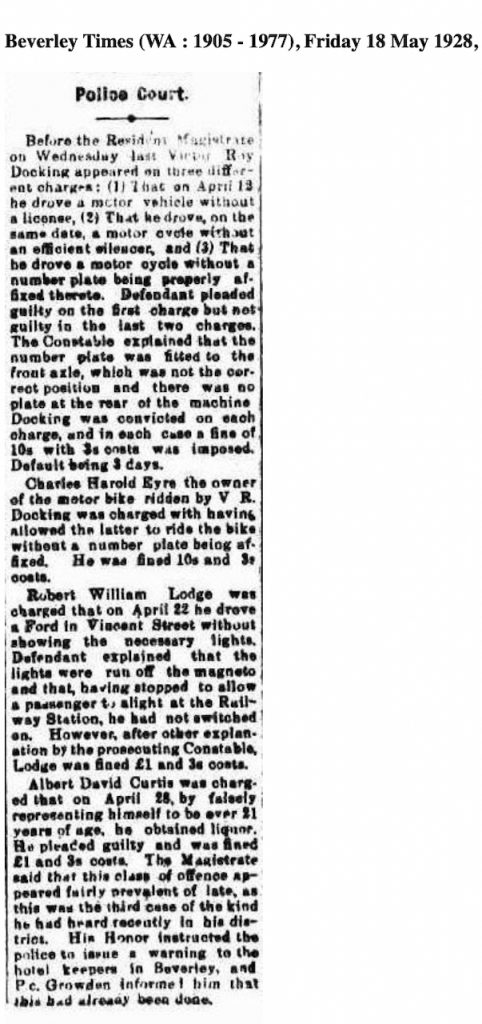
Victor died in 1937 in Geraldton at the age of 41 years.
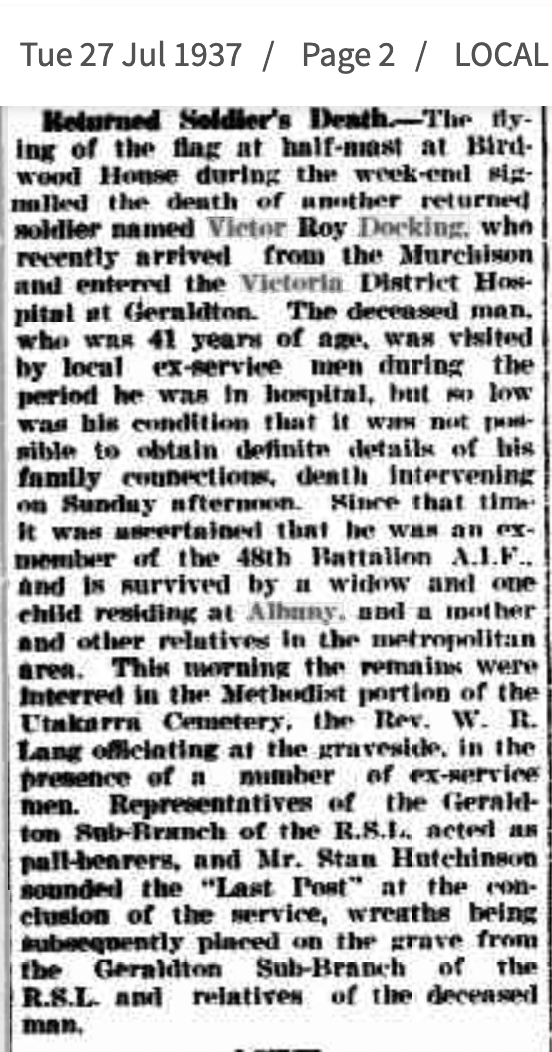
The Docking Brothers, Edward Charles, Arthur Austin and Victor Roy – all served overseas during WW1 and came home. The three brothers were born on Prahan, Victoria but relocated to Western Australia with their parents. Their father died in 1900.

Below: Mel’s grandmother Mrs M Schumann died 1936.
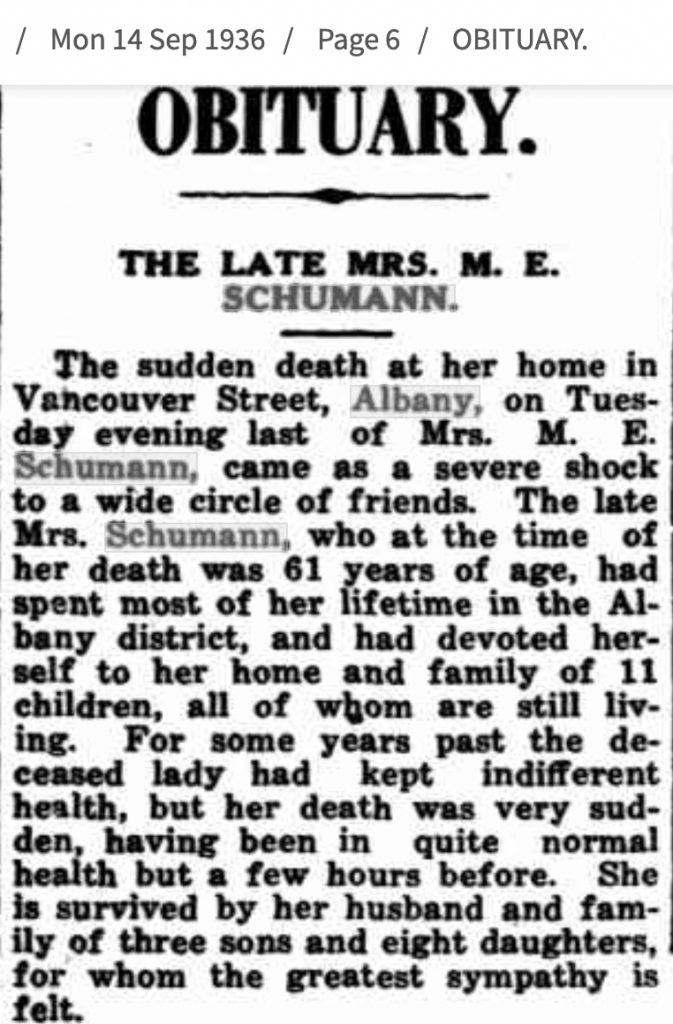
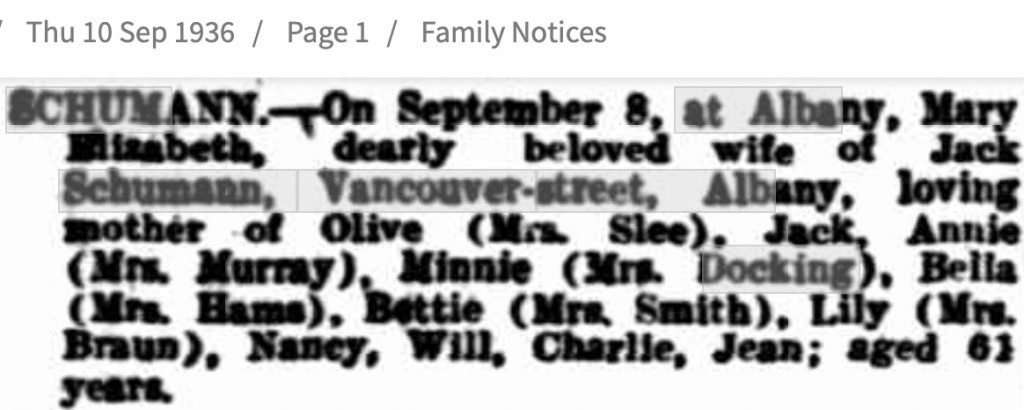


Please read about 2/4th boys from Albany
Mel returned from the war to his hometown of Albany.
He soon resumed playing footy.

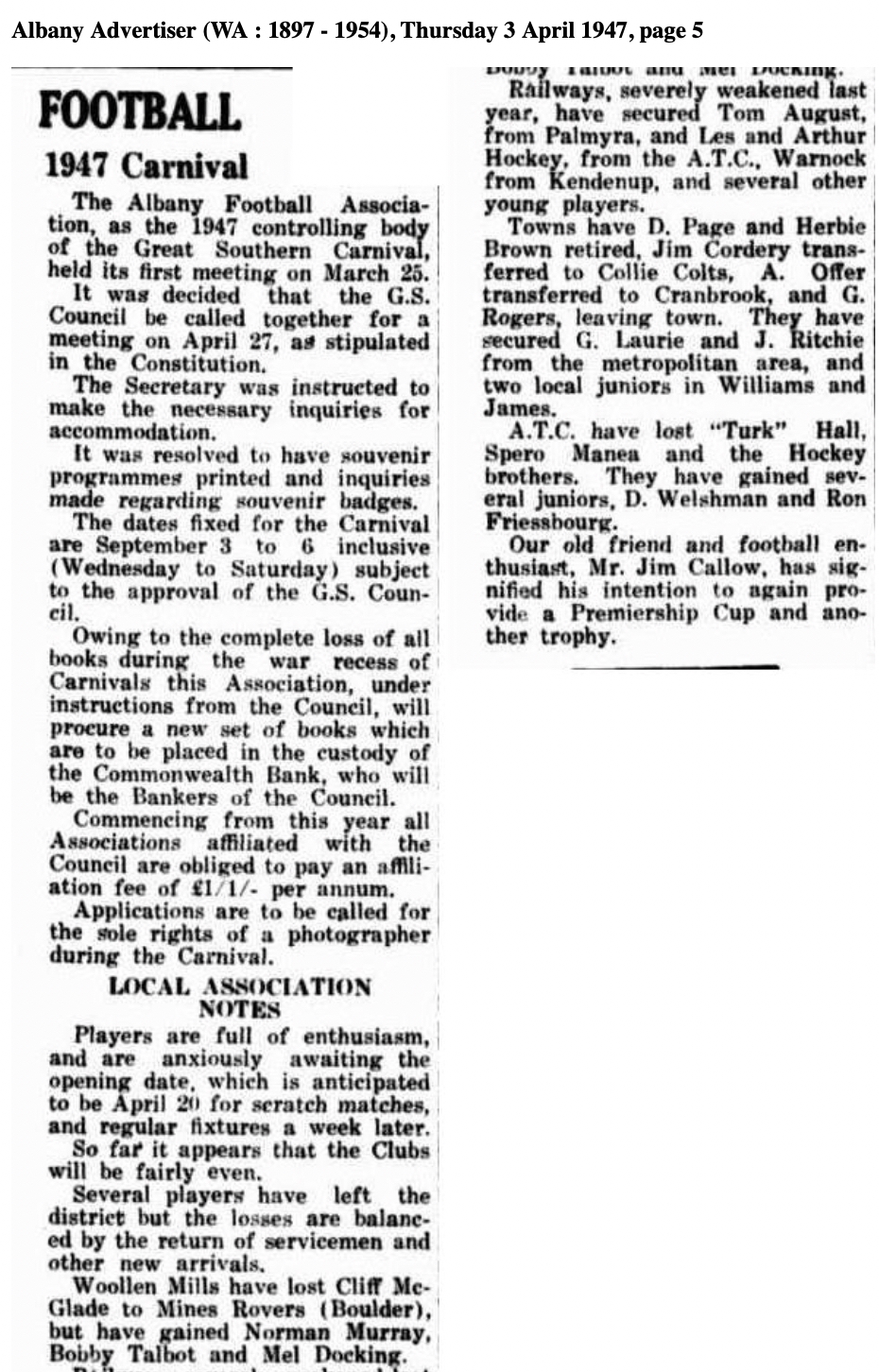
Below: in 1949 Mel’s grandfather died.
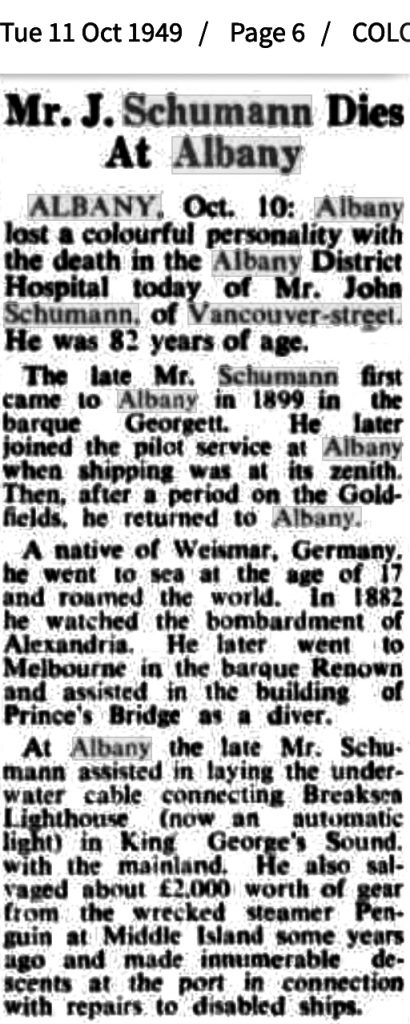
He married 1947 to Mary Jane Dawson and they resided in Albany where he was employed with carpentry.
His mother died in 1972.
Mel Docking died 25 October 1993 aged 72 years.
Below: January 1994 ‘Borehole Bulletin.’
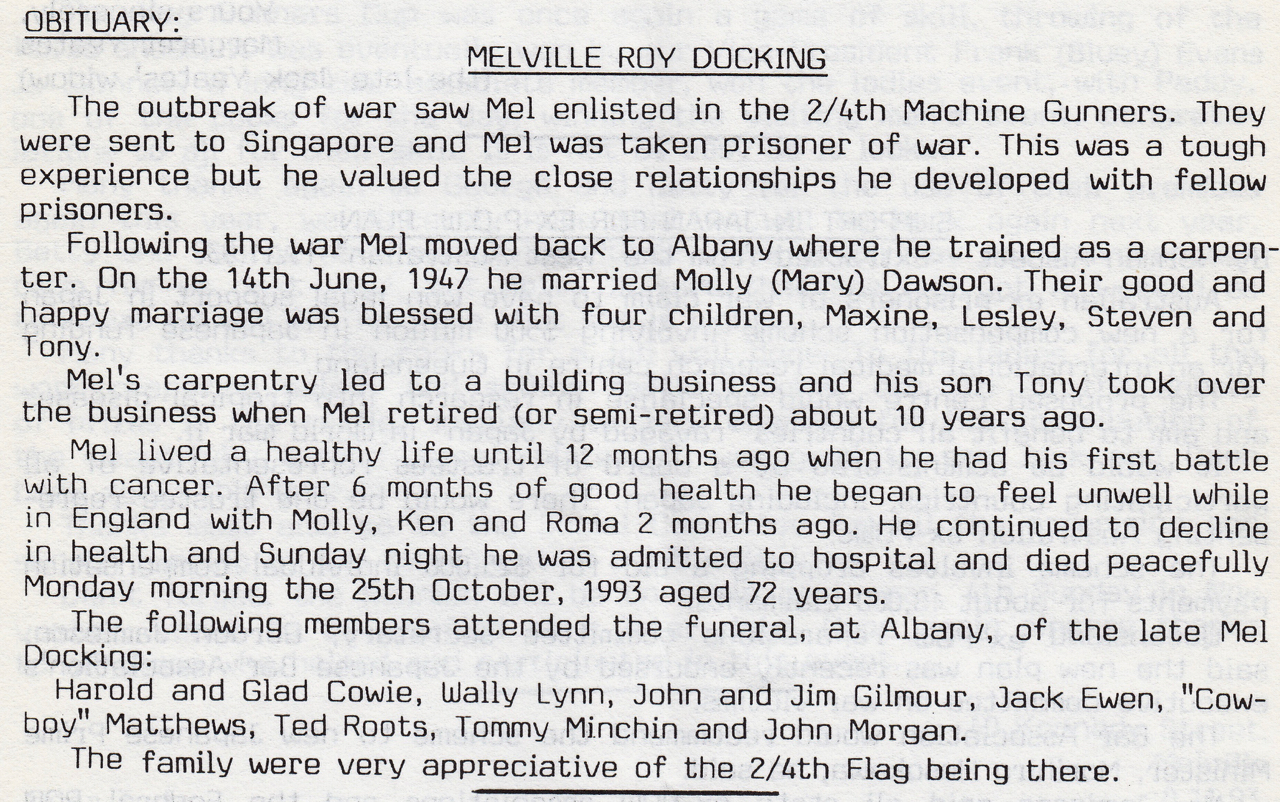
Below: Mel’s maternal grandfather John Schumann (born Germany) was a diver.
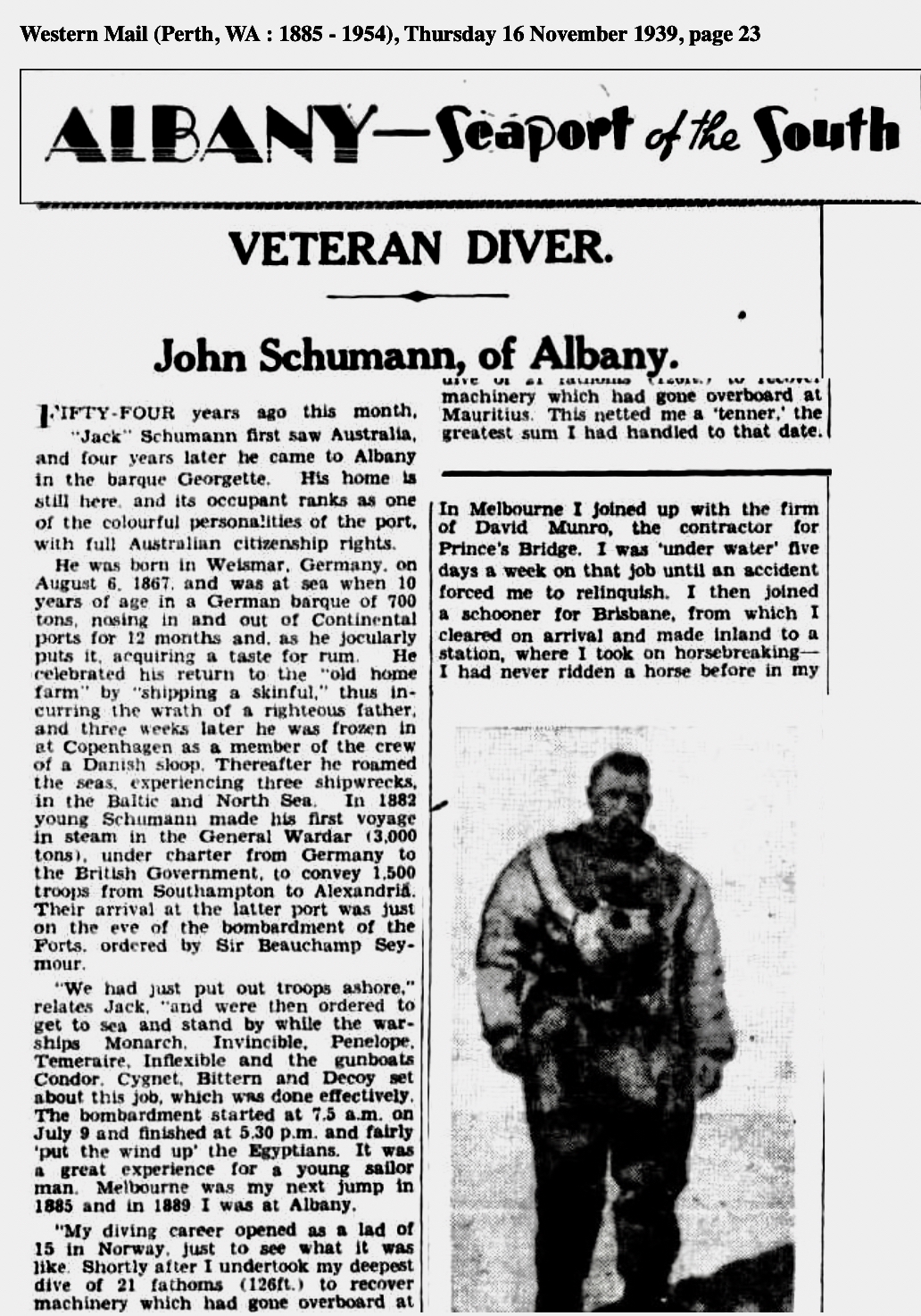
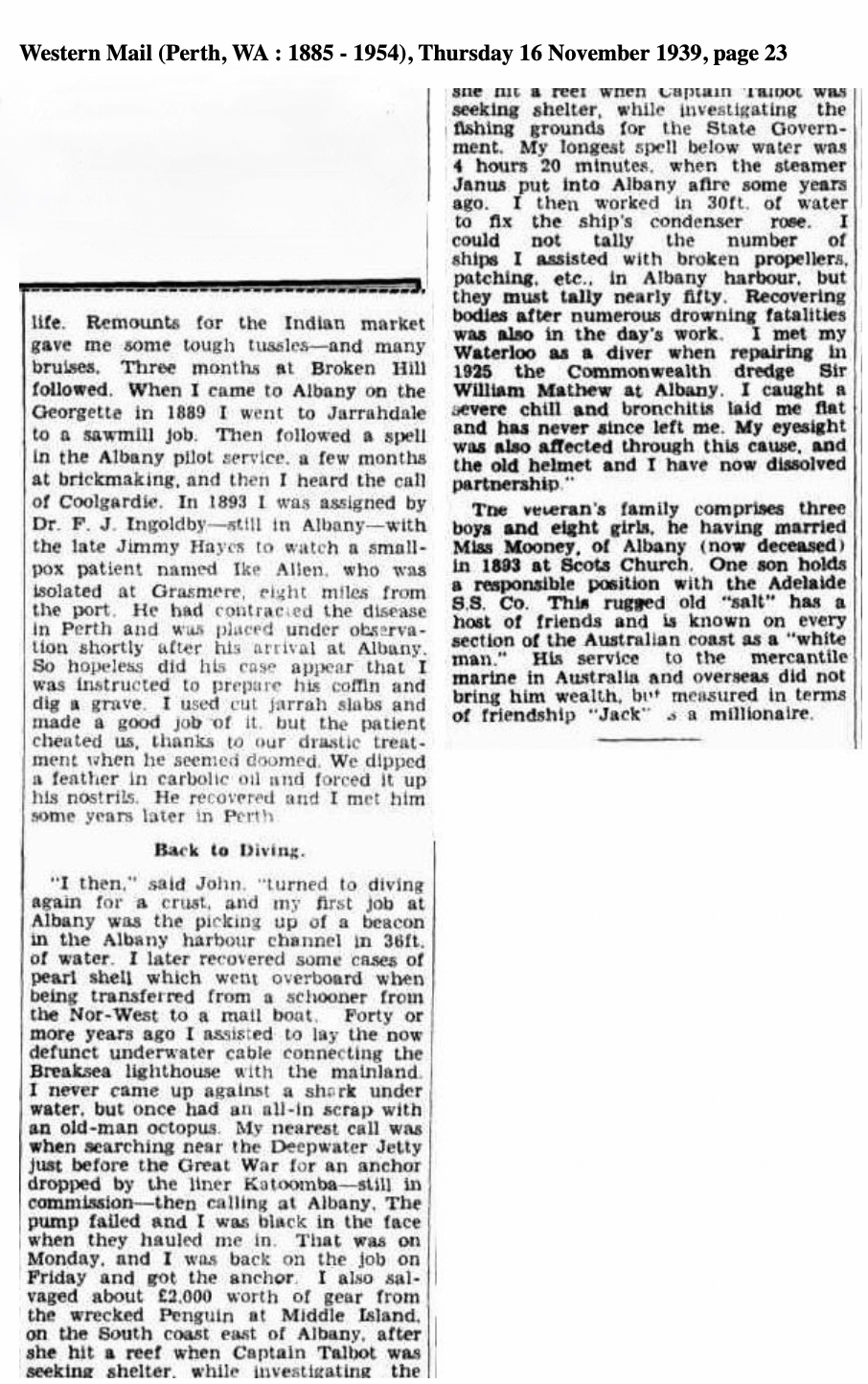
48th Battalion WW1
Camp Locations:
- Changi Gaol Camp - Singapore
- Roberts Barracks Changi - Singapore
- Selarang Barracks Changi - Singapore
- Kanchanaburi, 50k - Thailand
- Shimo Sonkurai, 288k - Thailand
- Tanbaya, 362k - Burma





